- Choosing the Right Primrose
- Providing Optimal Growing Conditions
- Watering Techniques for Primrose
- 1. Watering Frequency
- 2. Watering Method
- 3. Watering Amount
- 4. Water Quality
- 5. Watering Schedule
- Tips for Deadheading Primrose Flowers
- 1. Regular Inspection
- 2. Use Proper Tools
- 3. Remove the Whole Flowerhead
- 4. Avoid Damaging the Plant
- 5. Clean Up the Area
- 6. Water and Feed
- 7. Watch for New Growth
- Fertilization and Nutrient Management
- 1. Choose the right fertilizer
- 2. Follow the recommended dosage
- 3. Apply fertilizer at the right time
- 4. Water properly
- 5. Consider micronutrients
- 6. Monitor for nutrient deficiencies
- 7. Avoid overwatering
- 8. Mulch the soil
- Preventing Pests and Diseases in Primrose
- 1. Choose Healthy Plants:
- 2. Proper Planting:
- 3. Watering:
- 4. Mulch:
- 5. Regular Inspections:
- 6. Remove Infected Plants:
- 7. Use Organic Pest Control:
- 8. Proper Sanitation:
- 9. Fertilize Properly:
- 10. Monitor Environmental Conditions:
- Protecting Primrose from Harsh Weather Conditions
- 1. Provide Shelter
- 2. Use Covers
- 3. Mulch the Soil
- 4. Water Carefully
- 5. Protect from Frost
- 6. Monitor Temperature
- Celebrating International Women’s Day with Beautiful Primrose
- 1. Arrange a Beautiful Display
- 2. Gift Primroses to the Special Women in Your Life
- 3. Arrange a Floral Workshop
- 4. Create a DIY Primrose-themed Crafts
- 5. Share the Beauty on Social Media
- Questions and Answers:
- Is it possible to make my primrose last longer?
- What are some tips for prolonging the flowering of primroses?
- How often should I deadhead my primrose?
- What is the best way to water primroses?
- Can fertilizer help prolong the flowering of primroses?
- Videos: How to grow EVENING PRIMROSE from seed PART I
International Women’s Day is a special occasion to celebrate the achievements and contributions of women around the world. One way to mark this day is by giving or receiving a primrose, a beautiful and vibrant flower that symbolizes femininity and new beginnings.
If you want to make your primrose last longer and enjoy its beauty for weeks to come, there are a few tips and tricks you can follow. First, choose a healthy primrose plant from a reputable store or nursery. Look for plants with strong stems, lush foliage, and vibrant flowers.
Once you bring your primrose home, find a suitable spot for it. Primroses prefer cool temperatures, so place them in a location with indirect sunlight and good air circulation. Avoid placing them near drafts or heat sources, as this can cause the flowers to wilt prematurely.
Watering is key to maintaining your primrose’s longevity. Keep the soil consistently moist, but not overly saturated. Avoid letting the soil dry out completely or sitting in water. To water, pour room temperature water directly onto the soil, making sure to avoid wetting the foliage.
Pro tip: Adding a layer of mulch around the primrose can help conserve moisture and regulate soil temperature.
Lastly, regularly remove any dead or fading flowers to encourage new blooms. Gently pinch off the spent flowers at the base of the stem to promote further flowering. This will help prolong the blooming period of your primrose and keep it looking fresh and vibrant.
By following these simple tips, you can ensure that your primrose lasts longer for International Women’s Day and beyond. Enjoy the beauty and symbolism of this lovely flower, and celebrate the women in your life with a gift that will bring joy and happiness for weeks to come.
Choosing the Right Primrose
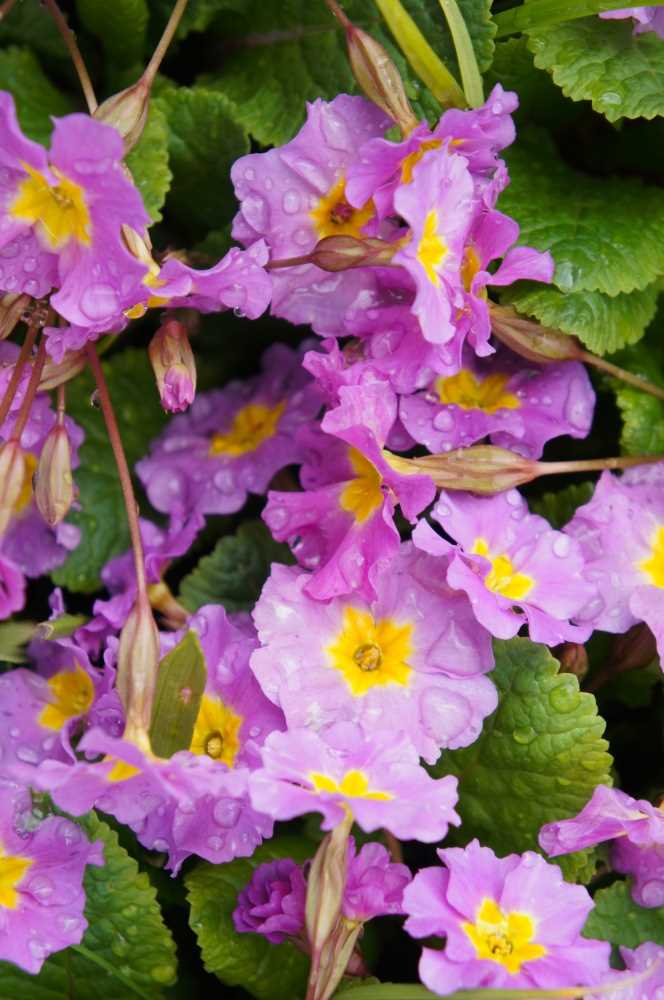
When selecting a primrose plant, it is important to choose one that is healthy and suited to your specific growing conditions. Here are some tips to help you choose the right primrose:
- Color: Primroses come in a wide range of colors, so choose one that appeals to you and will complement your existing garden or indoor decor.
- Size: Consider the size of the primrose plant you want to buy. Primroses come in various sizes, from small bedding plants to larger potted plants. Choose a size that suits the space you have available.
- Life stage: Primroses are typically sold as young plants or in full bloom. If you are looking for a longer-lasting plant, choose one that is still in bud or has developing flowers rather than one that is already fully flowered.
- Health: Inspect the plant closely for signs of disease or damage. Avoid plants with yellowing or browning leaves, wilted flowers, or any other obvious signs of distress.
- Growing conditions: Primroses can thrive in both indoor and outdoor settings, but they have specific requirements for sunlight, temperature, and soil moisture. Make sure to choose a primrose that is suitable for the growing conditions in your garden or home.
By considering these factors, you can choose a primrose plant that will thrive in your environment and provide long-lasting beauty.
Providing Optimal Growing Conditions
- Choose a suitable location for your primrose. Primroses prefer partial shade or filtered sunlight. Avoid placing them in direct sunlight, as this can cause the flowers to wilt and fade quickly.
- Ensure proper drainage for your primrose. These plants do not like to sit in waterlogged soil. Use well-draining soil or add organic matter to improve drainage.
- Water your primrose regularly, but avoid overwatering. Check the moisture level of the soil by inserting your finger into the soil up to the first knuckle. If the soil feels dry at this depth, it’s time to water.
- Fertilize your primrose every two weeks with a balanced water-soluble fertilizer. This will provide the necessary nutrients for healthy growth and prolonged flowering.
- Provide adequate airflow around your primrose. Good air circulation helps prevent the development of diseases and keeps the plant healthy.
- Protect your primrose from extreme temperatures. Primroses prefer cooler temperatures, ideally between 50-65°F (10-18°C). Avoid exposing the plant to freezing temperatures or hot, dry conditions.
By providing optimal growing conditions for your primrose, you can extend its flowering period and enjoy its beautiful blooms for a longer time.
Watering Techniques for Primrose
Proper watering is essential for keeping your primrose plant healthy and ensuring a longer flowering period. Here are some watering techniques to help you take care of your primrose:
1. Watering Frequency
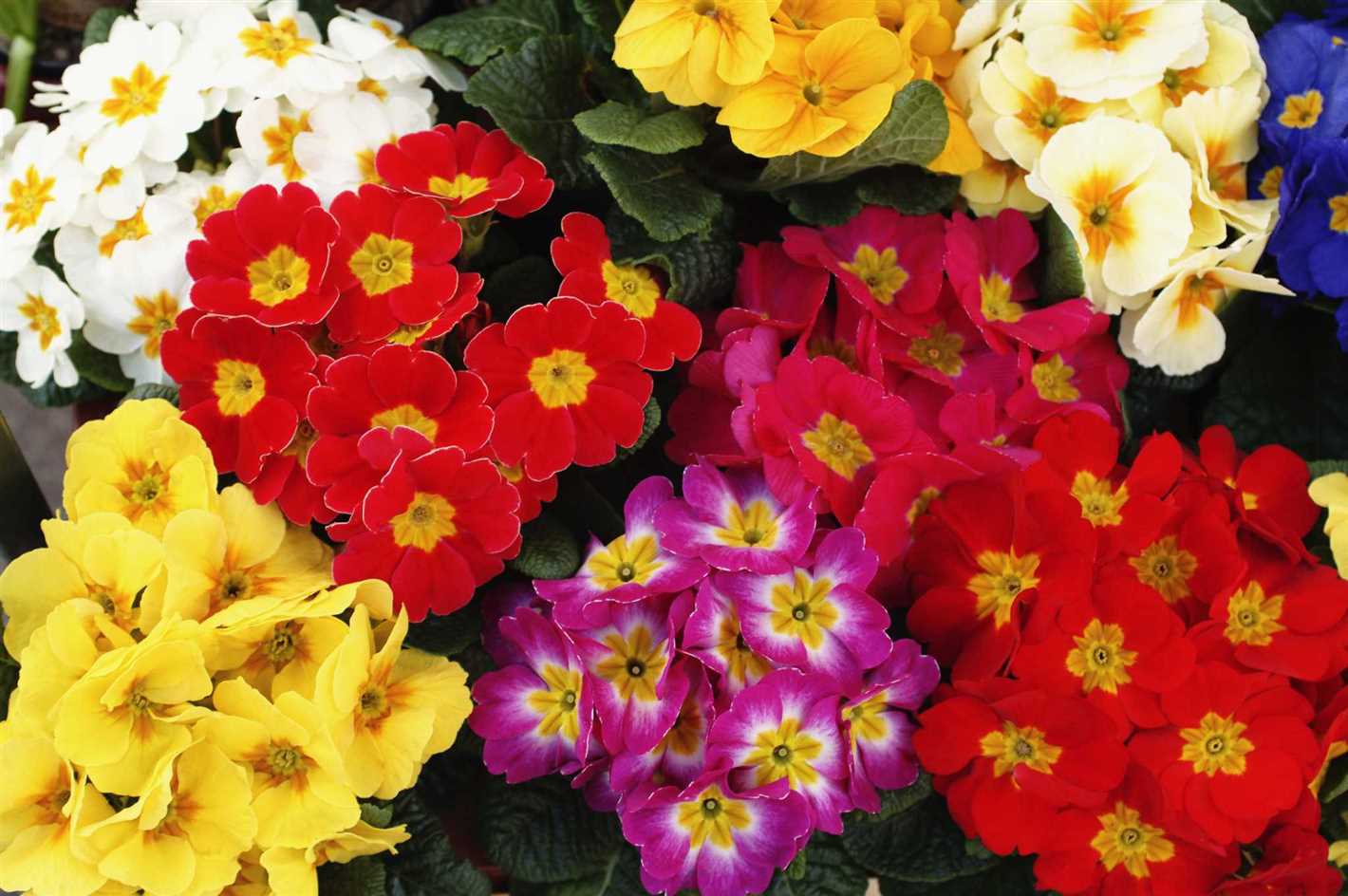
Primroses prefer moist soil, but not waterlogged conditions. Generally, you should water your primrose when the top inch of soil feels dry to the touch. Avoid overwatering as it can lead to root rot and other fungal diseases.
2. Watering Method
It is best to water primrose plants from below rather than from above. This helps prevent water from sitting on the leaves and causing damage. You can do this by placing the pot in a tray filled with water and allowing the plant to absorb the moisture through the drainage holes.
3. Watering Amount
When watering your primrose, aim to thoroughly wet the soil without letting it become excessively wet. Allow the excess water to drain out completely. Avoid letting the plant sit in standing water, as this can lead to root rot. Adjust the amount of water based on the size of the pot and the moisture retention capacity of the soil.
4. Water Quality
Using clean, non-chlorinated water is ideal for watering your primrose. If your tap water is chlorinated, fill a container and let it sit for a day to allow the chlorine to evaporate. Alternatively, you can use rainwater or distilled water.
5. Watering Schedule
Establishing a regular watering schedule can help ensure your primrose gets the right amount of moisture. However, it is important to monitor the moisture level of the soil and adjust the frequency of watering as needed. During hot summer months, you may need to water more often.
By following these watering techniques, you can help your primrose plant thrive and enjoy beautiful, long-lasting flowers.
Tips for Deadheading Primrose Flowers
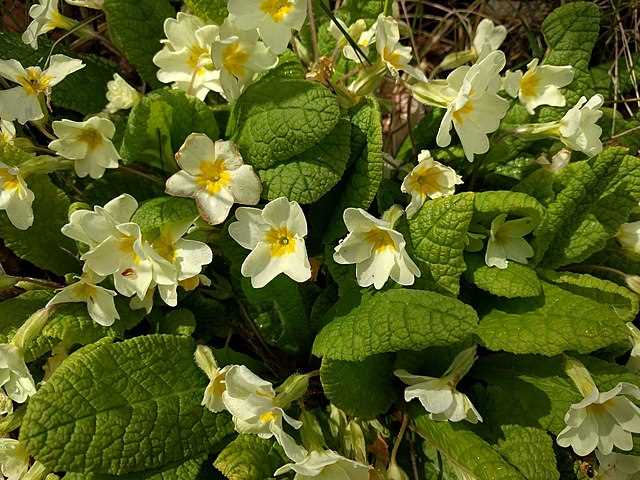
Deadheading, or removing the spent flowers, of primrose plants can help prolong their blooming period and promote healthier growth. Here are some tips for deadheading primrose flowers:
1. Regular Inspection
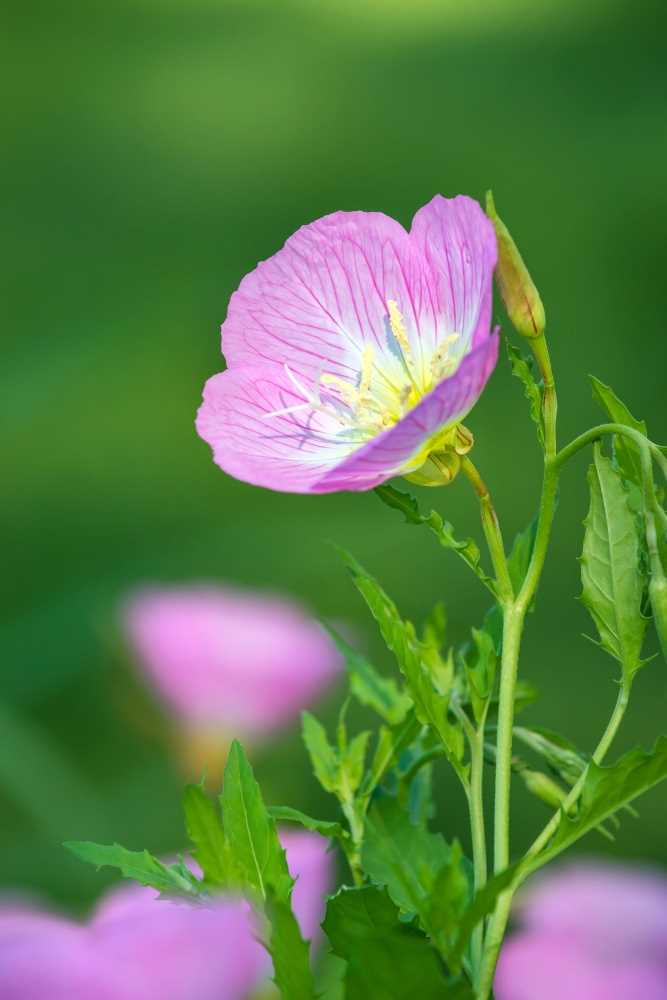
Check your primrose plants regularly to identify flowers that have started to wither or fade. Deadheading is most effective when done as soon as the flowers start to deteriorate.
2. Use Proper Tools
Use a pair of sharp pruning shears or scissors to deadhead primrose flowers. Make clean cuts just above a leaf node or bud to encourage new growth.
3. Remove the Whole Flowerhead
When deadheading, it’s important to remove the entire flowerhead, including the stalk, to prevent the development of seed pods. This will redirect the plant’s energy towards producing new blooms rather than seeds.
4. Avoid Damaging the Plant
Be careful not to damage the plant or nearby buds or leaves while deadheading. Take your time and be gentle when removing spent flowers to avoid unnecessary stress on the plant.
5. Clean Up the Area
After deadheading, collect and remove the discarded flowers and stems from the area around the plant. This helps maintain cleanliness and prevents the buildup of potential disease-causing organisms.
6. Water and Feed
After deadheading, give your primrose plants a thorough watering and apply a balanced fertilizer. This will provide the necessary nutrients for the plant to produce new flowers and maintain overall health.
7. Watch for New Growth
Monitor your primrose plants for new growth after deadheading. This is a sign that the plant is responding well and preparing to produce new flowers. Continue to care for the plant and repeat the deadheading process as necessary.
By following these tips, you can help keep your primrose plants looking their best and enjoy their beautiful blooms for a longer period of time.
Fertilization and Nutrient Management
Proper fertilization and nutrient management are essential for keeping your primrose healthy and prolonging its flowering period. Here are some tips to help you with fertilizing and managing nutrients:
1. Choose the right fertilizer
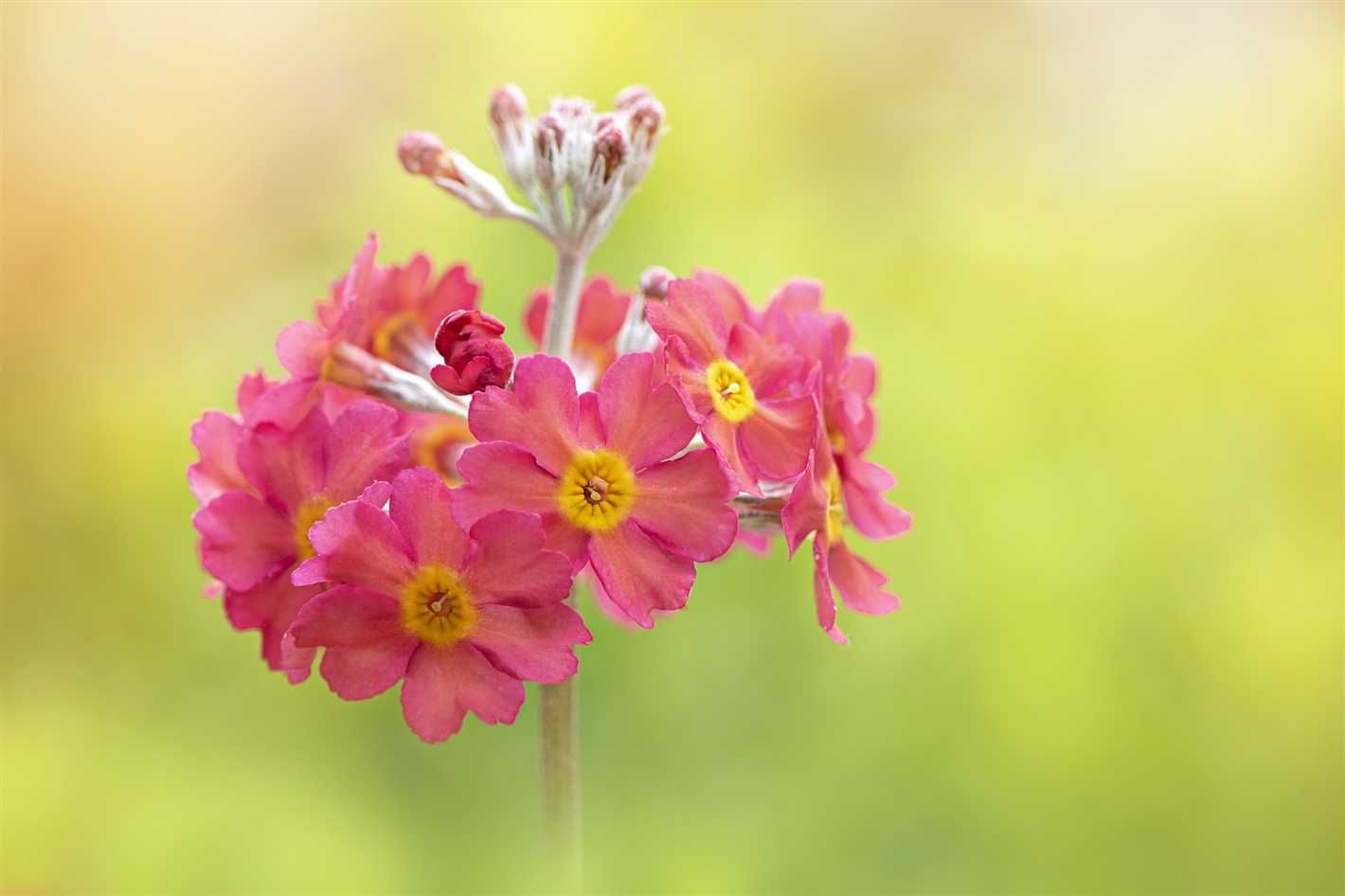
Use a balanced, slow-release fertilizer specifically formulated for flowering plants. Look for a fertilizer with a ratio of nitrogen (N), phosphorus (P), and potassium (K) that is suited to your primrose variety. The recommended ratio for primroses is typically 10-10-10 or 14-14-14.
2. Follow the recommended dosage
Read the instructions on the fertilizer packaging and follow the recommended dosage. Over-fertilizing can damage the plant or lead to excessive leaf growth at the expense of flower production. Under-fertilizing, on the other hand, may result in poor growth and reduced flowering.
3. Apply fertilizer at the right time
Apply the fertilizer when your primrose is actively growing, usually in the spring and early summer. Avoid fertilizing during the dormant period or in hot, dry weather, as this can stress the plant.
4. Water properly
Water your primrose thoroughly before applying fertilizer. This helps prevent burn and ensures proper uptake of nutrients. After fertilizing, water the plant again to help distribute the nutrients throughout the soil.
5. Consider micronutrients
In addition to the primary nutrients (N, P, K), primroses also require trace elements or micronutrients for optimal growth. You can consider using a fertilizer that contains micronutrients like iron, manganese, and zinc. These micronutrients are usually present in small amounts in the soil, but supplementing them can promote healthier and more vibrant blooms.
6. Monitor for nutrient deficiencies
Keep an eye out for signs of nutrient deficiencies, such as yellowing leaves, poor growth, or leaf discoloration. If you notice any deficiencies, adjust your fertilizer program accordingly or consult a gardening expert for advice.
7. Avoid overwatering
While it’s important to keep your primrose adequately watered, avoid overwatering, as this can lead to root rot and nutrient leaching. Ensure that the soil dries out slightly between waterings to prevent waterlogged conditions.
8. Mulch the soil
Applying a layer of organic mulch around the base of the primrose can help retain soil moisture, regulate temperature, and suppress weeds. This can contribute to overall plant health and nutrient management.
By following these tips for fertilization and nutrient management, you can help your primrose thrive and enjoy prolonged flowering throughout the International Women’s Day celebration.
Preventing Pests and Diseases in Primrose
Primrose plants are susceptible to various pests and diseases. By taking preventive measures, you can keep your primrose healthy and free from common issues. Here are some tips to prevent pests and diseases in primrose:
1. Choose Healthy Plants:
When purchasing primrose plants, make sure to select healthy ones. Inspect the leaves and flowers for any signs of pests or diseases. Avoid purchasing plants with yellow or wilted leaves.
2. Proper Planting:
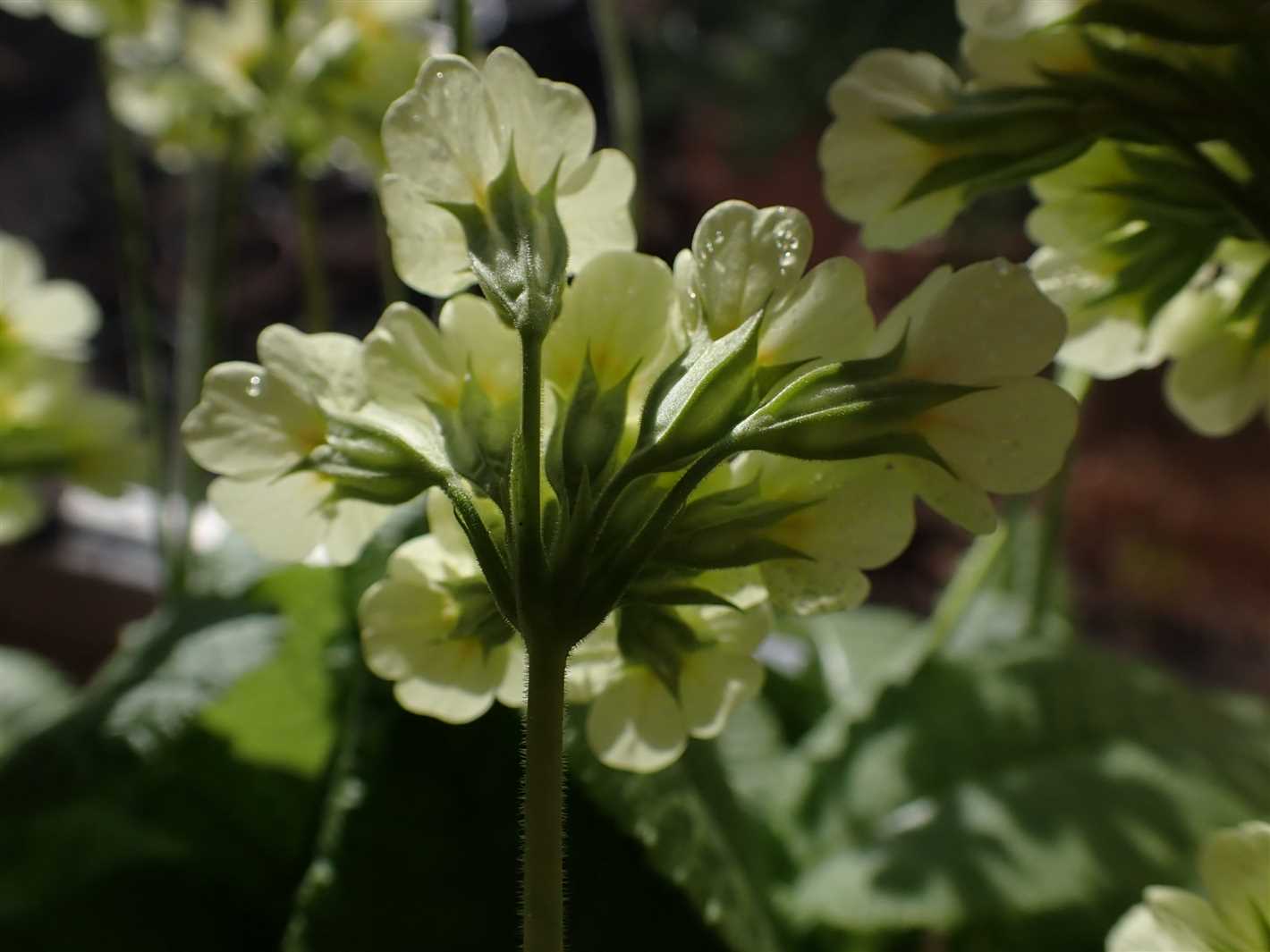
Plant your primrose in well-draining soil and provide them with sufficient sunlight. Avoid overcrowding the plants to prevent the spread of diseases.
3. Watering:
Water your primrose plants carefully to avoid overwatering, which can lead to root rot. Ensure that the soil is moist but not waterlogged. Avoid wetting the foliage while watering to prevent the development of fungal diseases.
4. Mulch:
Apply a layer of organic mulch around the base of the primrose plants. Mulch helps to retain moisture in the soil, regulate temperature, and prevent weeds. It also acts as a barrier against crawling pests.
5. Regular Inspections:
Regularly inspect your primrose plants for any signs of pests or diseases. Look for yellowing leaves, wilting flowers, or any unusual growth. Early detection can help prevent the further spread of issues.
6. Remove Infected Plants:
If you notice any plants showing signs of pests or diseases, promptly remove them from the garden. This will prevent the problem from spreading to other healthy plants.
7. Use Organic Pest Control:
Consider using organic pest control methods, such as insecticidal soaps or neem oil, to control common pests like aphids or spider mites. These options are safer for the environment and do not harm beneficial insects.
8. Proper Sanitation:
Practicing proper sanitation is essential in preventing the spread of diseases. Clean gardening tools and containers to avoid transferring pathogens from one plant to another. Dispose of any fallen leaves or plant debris to minimize disease buildup.
9. Fertilize Properly:
Avoid over-fertilizing your primrose plants, as it can lead to weak growth and susceptibility to diseases. Use a balanced fertilizer specifically formulated for flowering plants and follow the recommended application rates.
10. Monitor Environmental Conditions:
Pay attention to the environmental conditions that can affect your primrose plants. Excessive heat, cold, or humidity can stress the plants and make them more susceptible to pests and diseases. Provide appropriate protection or adjust the growing conditions accordingly.
By following these preventive measures, you can help ensure that your primrose plants stay healthy and vibrant throughout their flowering season.
Protecting Primrose from Harsh Weather Conditions
Primroses can be delicate flowers and can suffer from damage caused by harsh weather conditions. By taking a few precautions, you can protect your primrose and ensure it lasts longer.
1. Provide Shelter
During strong winds or heavy rain, it’s important to provide shelter for your primrose. This can be done by placing it in a protected location, such as under a tree or near a wall. Avoid exposing the plant to direct wind or rain, as it can damage the delicate petals.
2. Use Covers
If your primrose is potted, consider using covers to protect it from extreme weather conditions. Plastic covers or cloches can shield the plant from frost, hail, or heavy rain. Make sure to remove the covers during milder weather to allow proper airflow and prevent moisture buildup.
3. Mulch the Soil
Adding a layer of mulch around your primrose can help protect the roots from extreme temperatures. Mulch acts as an insulator, keeping the soil temperature more stable. Use organic materials such as straw, wood chips, or shredded bark and spread it around the base of the plant.
4. Water Carefully
During periods of heavy rain, the soil surrounding your primrose can become waterlogged, which can lead to root rot. Ensure proper drainage by avoiding overwatering and providing adequate drainage holes in the pot. If your primrose is planted in the ground, make sure the soil is well-draining and does not become waterlogged.
5. Protect from Frost
Primroses are typically frost-tolerant, but prolonged exposure to freezing temperatures can damage or kill the plant. If frost is expected, cover your primrose with a frost cloth or blanket during the coldest part of the night. This will provide an extra layer of protection and help retain heat.
6. Monitor Temperature
Monitor the temperature and weather conditions regularly to anticipate any potential issues. If a frost or heavy rain is expected, take appropriate measures to protect your primrose. By staying informed about the weather, you can prevent damage to your plant.
By following these tips and protecting your primrose from harsh weather conditions, you can enjoy its beautiful blooms for longer. Remember to monitor the weather, provide shelter, and take necessary precautions to keep your primrose happy and healthy.
Celebrating International Women’s Day with Beautiful Primrose
International Women’s Day is a special occasion to honor and appreciate the achievements and contributions of women around the world. One lovely way to celebrate this day is by decorating your home or gifting a beautiful primrose, a symbol of femininity, grace, and resilience.
Primroses come in various vibrant colors, such as pink, purple, yellow, and white, making them perfect for creating a cheerful and festive atmosphere on International Women’s Day.
Here are a few ideas to help you make the most of your primrose to celebrate this significant day:
1. Arrange a Beautiful Display
Create an eye-catching display by grouping several primrose plants together. You can place them in decorative pots or line them up in a row. Add some colored ribbons or personal notes to enhance the festive ambiance.
2. Gift Primroses to the Special Women in Your Life
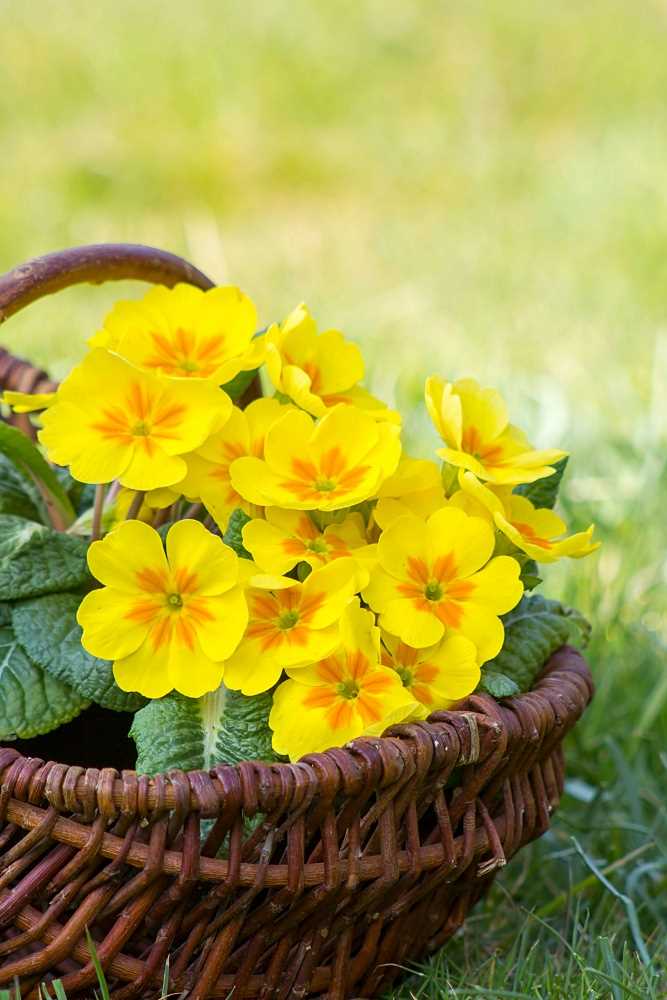
Show your appreciation by gifting primroses to the influential women in your life. Whether it’s your mother, sister, friend, or colleague, they will surely appreciate this thoughtful gesture. Attach a heartfelt note to make the gift even more meaningful.
3. Arrange a Floral Workshop
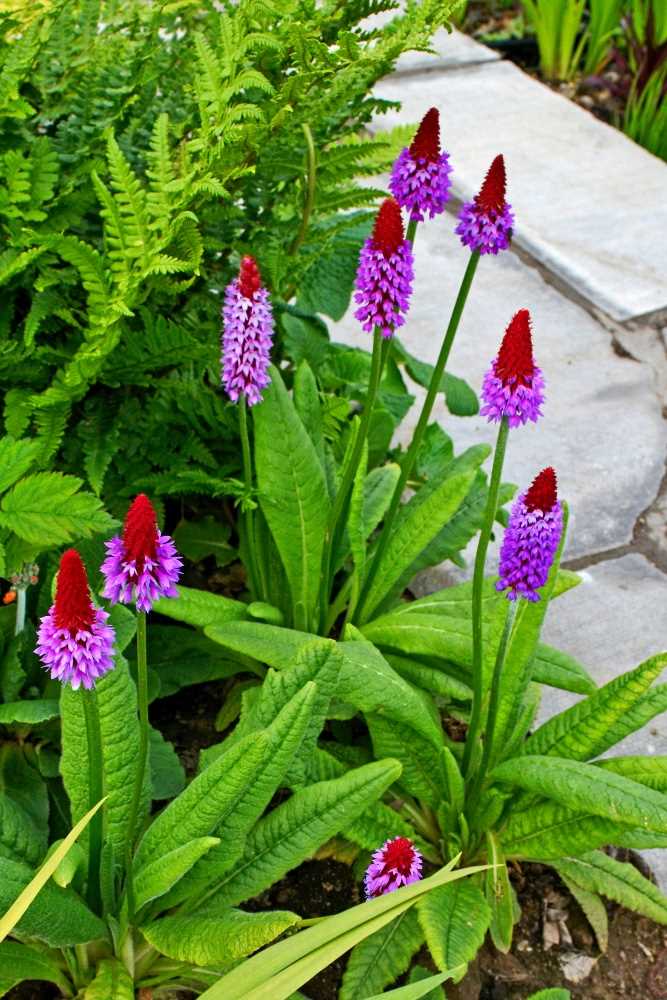
Host a floral workshop where you can invite women to learn how to care for and arrange primroses. This interactive experience will not only provide them with new skills but also give them a chance to connect and celebrate together.
4. Create a DIY Primrose-themed Crafts
Get creative and make DIY crafts inspired by primroses. You can create beautiful cards, wreaths, or even floral-inspired artwork. These personalized crafts can be used as gifts or decorations to commemorate International Women’s Day.
5. Share the Beauty on Social Media
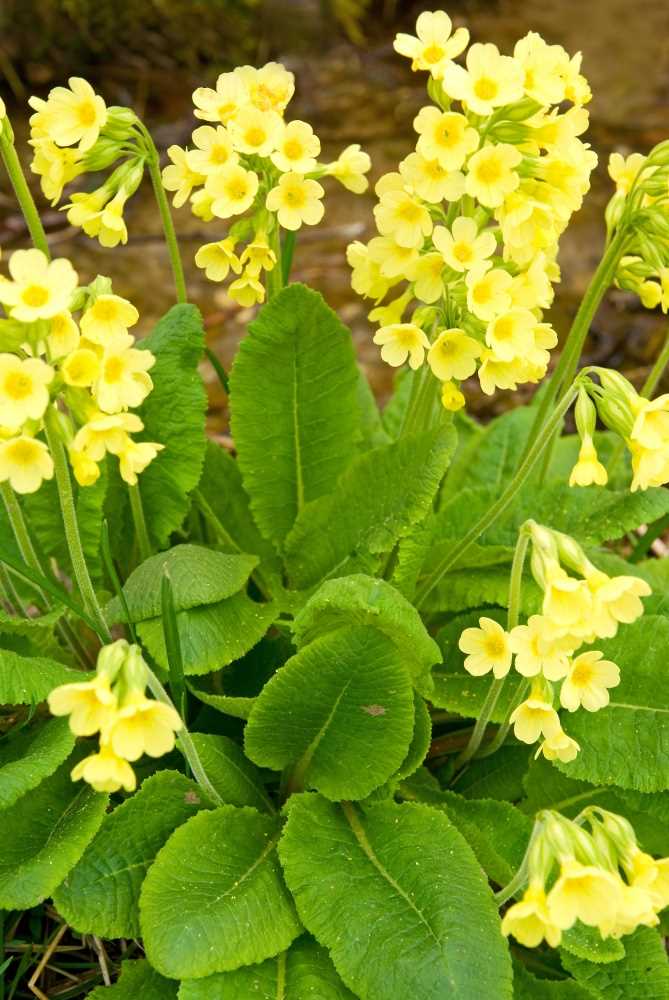
Celebrate the achievements of women worldwide by sharing pictures of your primrose display or gifts on social media. Use hashtags like #InternationalWomensDay and #BeautifulPrimrose to spread positivity and inspire others to join in the celebration.
Remember, International Women’s Day is a time to reflect on the progress made towards gender equality, appreciate the women in our lives, and show support for a more inclusive future. Let the beauty of primroses enhance your celebrations and serve as a reminder of the strength and beauty within every woman.
Questions and Answers:
Is it possible to make my primrose last longer?
Yes, it is possible to make your primrose last longer by following a few simple tips and tricks.
What are some tips for prolonging the flowering of primroses?
Some tips for prolonging the flowering of primroses include deadheading spent blooms, watering carefully, providing adequate sunlight, and fertilizing regularly.
How often should I deadhead my primrose?
You should deadhead your primrose as soon as the blooms start to fade. This will encourage the plant to produce new blooms and prolong the flowering period.
What is the best way to water primroses?
The best way to water primroses is to water them thoroughly when the top inch of soil feels dry to the touch. Be careful not to overwater, as primroses are susceptible to root rot.
Can fertilizer help prolong the flowering of primroses?
Yes, fertilizing primroses regularly with a balanced, water-soluble fertilizer can help promote healthy growth and prolong the flowering period.







